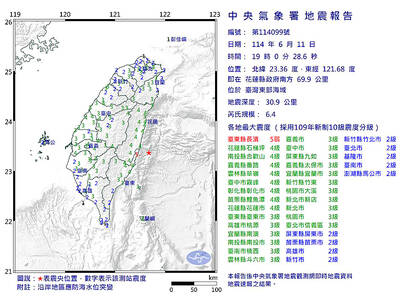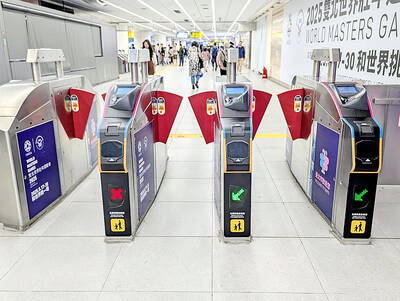Democratic Progressive Party (DPP) lawmakers representing “non-special municipality” cities and counties yesterday said they would propose a 10-year, NT$100 billion (US$3.33 billion) project to help local governments’ finances and to close the gap in general development between the six special municipalities and local regions.
The six special municipalities — Taipei City, New Taipei City, Greater Taichung, Greater Tainan, Greater Kaohsiung and Taoyuan County, which is scheduled to be promoted to special municipality status by the end of the year — take up only 30 percent of the nation’s territory, but have created a magnet effect by accounting for more than 70 percent of the population and sucking up most government funding, Pingtung County DPP Legislator Pan Men-an (潘孟安) told a press conference.
“One Taiwan, two worlds. That is how I would put it. The urbanization phenomenon and the government’s poor allocation of the Tax Redistribution Fund (統籌分配款), which heavily favored the special municipalities, have contributed to a growing imbalance between the six large cities and the other administrative zones,” Pan said.
Between 2011 and this year, about 63 percent of the tax redistribution fund went to the six special municipalities, while only 22 percent was allocated to the 16 other administrative zones, Pan said.
Drawing on the Offshore Islands Development Act (離島建設條例) and the Hualien-Taitung Area Development Act (花東地區發展條例), Pan and other DPP lawmakers are proposing a special act for revitalizing cities’ and counties’ development, under which a development fund of NT$100 billion is planned to be established to help poorer and less-developed rergions.
Pan said he hoped that Chinese Nationalist Party (KMT) lawmakers representing those regions would support the proposed bill for the 11 administrative regions.
According to Pan — the DPP’s nominee in the Pingtung commissioner election — the bill would demand that the government initiate a strategic plan, to be reviewed every four years, and that the development fund would come from an annual government subsidy to be granted for a period of 10 years, together with interest, donations and other resources.
Citing government statistics, the lawmakers said that the gap between the special municipalities and other regions is alarming.
In 2012, the average annual household income in the special municipalities was NT$160,000 higher than in other regions, while the average social welfare expenditure per resident was NT$8,529 for special municipality residents and NT$5,087 for non-special municipality residents.
As far as transportation infrastructure is concerned, the Ministry of Transportation and Communications’ annual subsidy for the special municipalities in the five years between 2009 and last year was as high as NT$28 billion, but the highest annual subsidy in the non-special municipality regions was NT$5.6 billion.
In other areas, such as medical service resources, long-term care resources and education resources, the imbalance has also been apparent, DPP Legislator Wu Yi-chen (吳宜臻) of Miaoli County said.
“It doesn’t make sense that the larger cities with much more tax sources receive more government subsidies. It should have been the other way around,” Wu said.
If the imbalance was not addressed quickly, the persistent population outflow and worsening local government finances in the lesser-developed regions could further deteriorate, DPP Legislator Chen Ou-po (陳歐珀) of Yilan County said.

A magnitude 6.4 earthquake struck off the coast of Hualien County in eastern Taiwan at 7pm yesterday, the Central Weather Administration (CWA) said. The epicenter of the temblor was at sea, about 69.9km south of Hualien County Hall, at a depth of 30.9km, it said. There were no immediate reports of damage resulting from the quake. The earthquake’s intensity, which gauges the actual effect of a temblor, was highest in Taitung County’s Changbin Township (長濱), where it measured 5 on Taiwan’s seven-tier intensity scale. The quake also measured an intensity of 4 in Hualien, Nantou, Chiayi, Yunlin, Changhua and Miaoli counties, as well as

Credit departments of farmers’ and fishers’ associations blocked a total of more than NT$180 million (US$6.01 million) from being lost to scams last year, National Police Agency (NPA) data showed. The Agricultural Finance Agency (AFA) said last week that staff of farmers’ and fishers’ associations’ credit departments are required to implement fraud prevention measures when they serve clients at the counter. They would ask clients about personal financial management activities whenever they suspect there might be a fraud situation, and would immediately report the incident to local authorities, which would send police officers to the site to help, it said. NPA data showed

ENERGY RESILIENCE: Although Alaska is open for investments, Taiwan is sourcing its gas from the Middle East, and the sea routes carry risks, Ho Cheng-hui said US government officials’ high-profile reception of a Taiwanese representative at the Alaska Sustainable Energy Conference indicated the emergence of an Indo-Pacific energy resilience alliance, an academic said. Presidential Office Secretary-General Pan Men-an (潘孟安) attended the conference in Alaska on Thursday last week at the invitation of the US government. Pan visited oil and gas facilities with senior US officials, including US Secretary of the Interior Doug Burgum, US Secretary of Energy Chris Wright, Alaska Governor Mike Dunleavy and US Senator Daniel Sullivan. Pan attending the conference on behalf of President William Lai (賴清德) shows a significant elevation in diplomatic representation,

The Taipei MRT is to begin accepting mobile payment services in the fall, Taipei Rapid Transit Corp said on Saturday. When the company finishes the installation of new payment units at ticketing gates in October, MRT passengers can use credit cards, Apple Pay, Google Pay and Samsung Pay, the operator said. In addition, the MRT would also provide QR payment codes — which would be compatible with Line Pay, Jkopay, iPass Money, PXPay Plus, EasyWallet, iCash Pay, Taiwan Pay and Taishin Pay — to access the railway system. Currently, passengers can access the Taipei MRT by buying a single-journey token or using EasyCard,